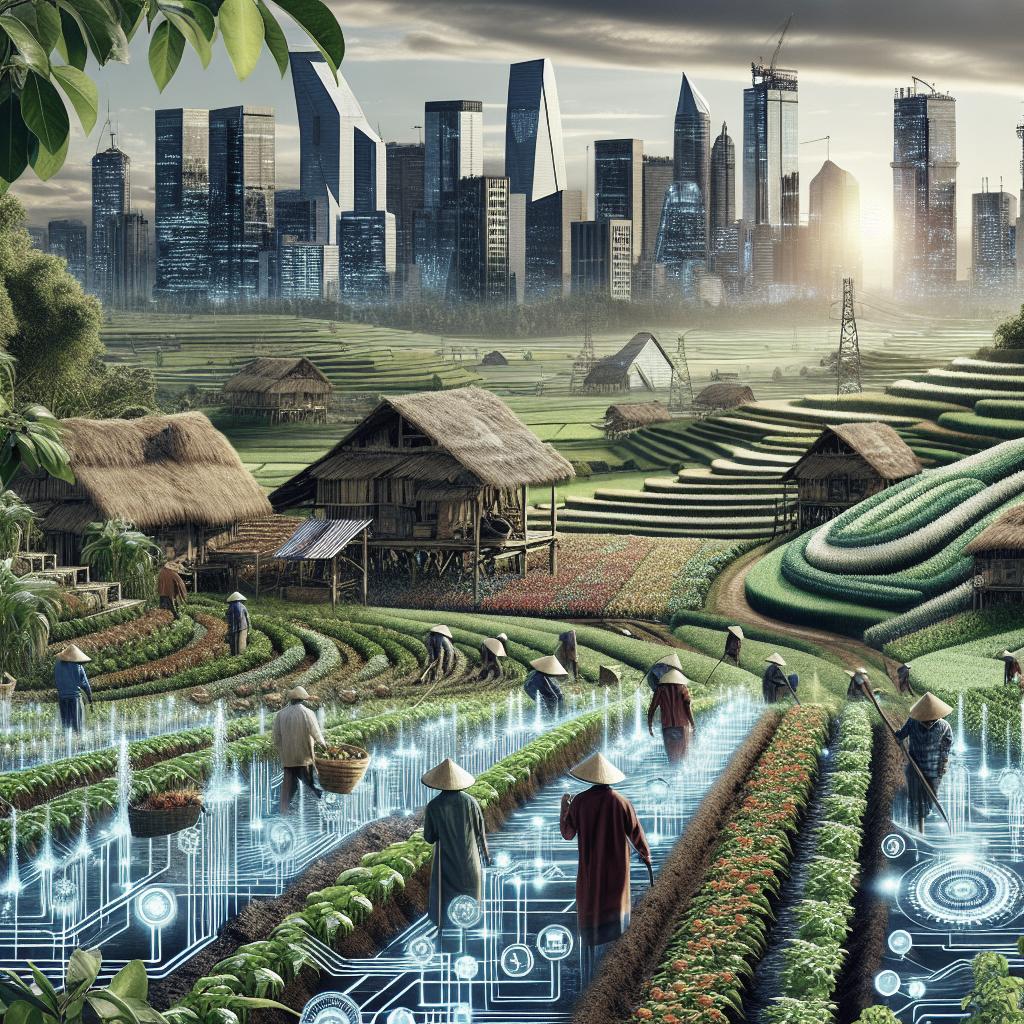The Role of Agriculture in Emerging Economies
Agriculture has long been the backbone of many emerging economies, fostering economic growth, providing employment, and securing food supplies. In this blog post, we delve into the various components of the agri-food system and explore how primary agriculture impacts these economies. We’ll also look into the significance of food and beverage processing in adding value and enhancing trade dynamics, both internationally and domestically. Furthermore, we’ll discuss the importance of sustainable economic growth through agricultural innovation and practices. By understanding these facets, we can appreciate the profound role that agriculture continues to play in the development strategies of emerging nations.
On this page
- The agri-food system
- Primary agriculture
- Food and beverage processing
- International trade and domestic market
- Sustainable economic growth
- Endnotes
The agri-food system
The system represents an integrated supply chain
The agri-food system in emerging economies is far more than a simple collection of agricultural practices. It represents an integrated supply chain that encompasses everything from raw production and processing to distribution and consumption. In these economies, the agri-food system is a critical component that links rural and urban communities, facilitating the flow of goods between farmers, processors, retailers, and ultimately consumers. This interconnectedness helps ensure that food products maintain quality, affordability, and sustainability as they move through the supply chain.
In many emerging societies, the agri-food system is undergoing rapid transformation thanks to technological advancements and a greater emphasis on value-added processes. This evolution enhances the efficiency of supply chain operations, reduces waste, and increases the overall economic potential of agricultural sectors. By strengthening the integrative capacity of these systems, emerging economies can better meet the growing demand for diversified and nutritious food products.
Primary agriculture
Farm market receipts
Farm market receipts are a vital measure of the agricultural sector’s health in emerging economies. They represent the total revenue generated by farms from the sale of crops, livestock, and other farm products. In many emerging markets, these receipts constitute a significant portion of gross domestic production, underscoring agriculture’s role as an economic driver. Regular analysis of farm market receipts provides valuable insights into production trends, price fluctuations, and potential areas for policy intervention.
With modernization and increasing access to global markets, farm market receipts in emerging economies have shown significant potential for growth. Investments in infrastructure, better access to financial services, and agricultural innovations can amplify the impact of these receipts. Such developments not only enhance the income of farmers but also support rural economies in their pursuit of rapid industrialization and urbanization.
Sector commodity breakdown
Understanding the sector commodity breakdown is crucial for grasping the complexity and diversity of agriculture in emerging economies. This breakdown categorizes major agricultural products based on their economic contribution and level of domestic and international demand. Common categories include staple grains, high-value cash crops, livestock, and emerging organic or niche market products.
In many emerging markets, cash crops such as coffee, cocoa, and tropical fruits play a pivotal role in generating export revenue. Similarly, the livestock sector, particularly poultry, beef, and dairy, supports both domestic food security and employment. By analyzing these commodity segments, policymakers and investors can identify opportunities for targeted growth strategies, enhance productivity, and ensure food sustainability across regions.
Food and beverage processing
Food and beverage processing is a critical component that adds value to agricultural products and significantly impacts emerging economies. This sector encompasses the transformation of raw agricultural materials into consumable goods through various processes, such as milling, fermenting, preserving, and packaging. By adding value to farm produce, processing industries can increase agricultural profitability and sustainability.
In emerging economies, enhancing the food and beverage processing sector can trigger a cascade of economic advancements. Improved processing capabilities lead to greater market diversification, better-quality food products, and enhanced competitiveness in global markets. These advancements, in turn, attract foreign investments and encourage local entrepreneurship, creating a myriad of employment opportunities and fostering an innovation-driven economic environment.
International trade and domestic market
The role of agriculture in international trade is a key driver of economic growth among emerging economies. Agricultural exports often represent a significant portion of these nations’ export revenue, with numerous national economies relying on the global demand for staple and specialty crops. Trade policies and agreements play a critical role in shaping how these goods move across borders, affecting price stability and market access for domestic producers.
Meanwhile, the domestic market also holds substantial importance for emerging economies. By fostering a robust internal demand for agricultural products, these countries can reduce their dependency on volatile global markets. This requires initiatives like promoting consumption of locally produced goods, developing infrastructure to support seamless market transitions, and encouraging innovations in both farming and retail sectors.
Sustainable economic growth
Sustainable economic growth in emerging economies depends heavily on the scalability of agricultural practices that blend traditional techniques with innovative technologies. This includes leveraging precision agriculture, smart irrigation systems, and integrated pest management to increase yields without compromising environmental health. These advancements contribute to more efficient resource use and open pathways to achieving food security in a world facing climate uncertainties.
Governments and private sectors can partner to align agricultural growth strategies with sustainability targets. Policy frameworks that promote investment in research and development, incentivize sustainable farming practices, and implement educational programs for rural communities are vital. Such collaborative efforts ensure that agriculture remains a resilient cornerstone for economic growth, poverty alleviation, and rural development.
Endnotes
Agriculture continues to hold a central place in the economic framework of emerging economies. From primary agriculture and processing to trade and sustainable growth initiatives, the sector’s comprehensive development influences numerous facets of societal progress. By prioritizing targeted investments, fostering innovation, and enhancing infrastructure, these nations can harness agriculture’s potential for transformative economic and social development.
Next steps
| Section | Summary |
|---|---|
| The agri-food system | An integrated supply chain ensuring efficient, sustainable flow of goods, vital for rural-urban connectivity and market demands. |
| Primary agriculture | Farm market receipts and sector commodity breakdowns highlight the economic contributions and diversification strategies of agriculture. |
| Food and beverage processing | Value addition raises profitability, market competitiveness, and employment, crucial for economic advancement in emerging economies. |
| International trade and domestic market | Trade and domestic market dynamics provide frameworks for macroeconomic stability and self-reliance in fluctuating global landscapes. |
| Sustainable economic growth | Emphasizes sustainable practices in agriculture to ensure resource efficiency, resilience, and food security across rapidly growing economies. |


